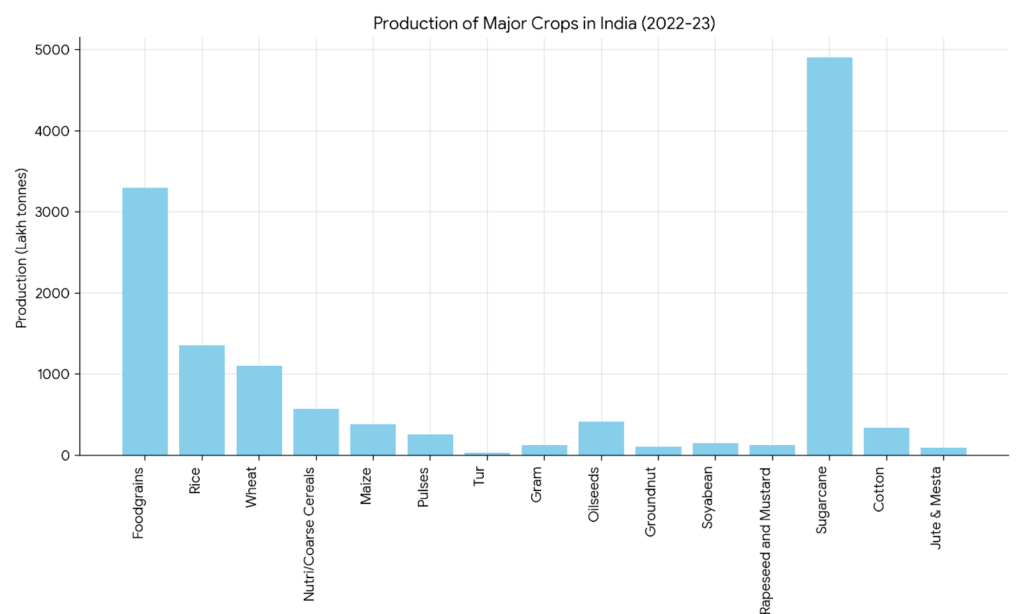The post shares key statistics about India’s Major Crop Production 2022-23. It includes a data table and visualization depicting production numbers for rice, wheat, maize and other major crops.
This information is especially valuable for agriculture students and aspirants preparing for agriculture officer, agriculture field officer, agriculture scientist, and other agriculture-focused government job exams.
Key Points of Major Crop Production 2022-23
- Total foodgrain production in 2022-23 estimated at record 3296.87 lakh tonnes, 140.71 lakh tonnes higher than 2021-22 and 308.69 lakh tonnes higher than previous 5 years’ average.
- Rice production estimated at 1357.55 lakh tonnes, 62.84 lakh tonnes higher than last year and 153.65 lakh tonnes higher than previous 5 years’ average.
- Nutri/Coarse cereals production estimated at 573.19 lakh tonnes, 62.18 lakh tonnes higher than last year and 92.79 lakh tonnes higher than previous 5 years’ average.
- Pulses production estimated at 260.58 lakh tonnes, 14.02 lakh tonnes higher than previous 5 years’ average.
- Oilseeds production estimated at record 413.55 lakh tonnes, 33.92 lakh tonnes higher than last year and 73.33 lakh tonnes higher than previous 5 years’ average.
- Sugarcane production estimated at 4905.33 lakh tonnes, 511.08 lakh tonnes higher than last year.
- Cotton production estimated at 336.60 lakh bales, 25.42 lakh bales higher than last year.
- Wheat production estimated at record 1105.54 lakh tonnes, 28.12 lakh tonnes higher than last year and 48.23 lakh tonnes higher than previous 5 years’ average.

Final Estimates of Major Crop Production 2022-23
| Crop | Production (Lakh tonnes) |
|---|---|
| Foodgrains | 3296.87 |
| Rice | 1357.55 |
| Wheat | 1105.54 |
| Nutri/Coarse Cereals | 573.19 |
| Maize | 380.85 |
| Pulses | 260.58 |
| Tur | 33.12 |
| Gram | 122.67 |
| Oilseeds | 413.55 |
| Groundnut | 102.97 |
| Soyabean | 149.85 |
| Rapeseed and Mustard | 126.43 |
| Sugarcane | 4905.33 |
| Cotton | 336.60 (Lakh bales) |
| Jute & Mesta | 93.92 (Lakh bales) |
Questions are often asked about annual targets vs achievements for key crops, emerging high production states, factors responsible for enhanced yields over previous years, etc.


🎓 Student Discussion
Share your questions and insights with the community!
Loading discussion...